Holy Week Brings Several “First… Again” Moments
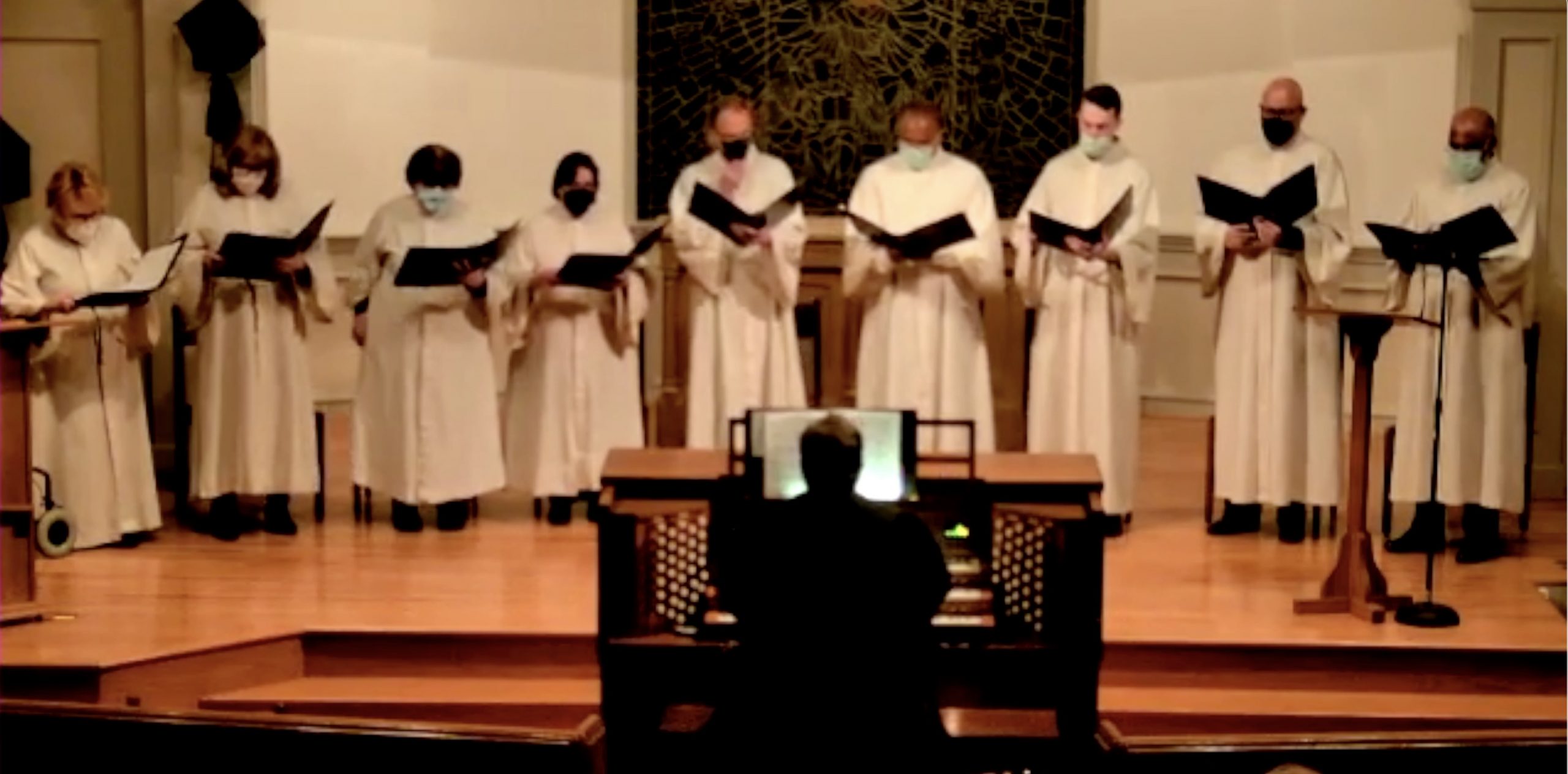
St. Mark’s gathered in-person and online April 11th-18th to observe Holy Week, the recollection of Jesus’s death and resurrection. This marked a step towards our familiar ways of community worship as for the past two years we were together only in spirit and on Zoom. Our worship and music teams wanted to provide at least the keystones of each major service while keeping safety and comfort in mind.
Palm Sunday
Two milestones took place on Palm Sunday as the Diocese had stated that we could resume sharing the common cup for Communion wine instead of wafers only, as there have been no verified instances of viral spread in this way. This was strictly voluntary and we were able “symbolically” receive the wine with the traditional exchange of words instead.
Of probably more impact to those present, singing together! Soprano Mary Kearney sang the verses of “The Holy City” but the congregation joined in on the refrain. It was very moving to hear our voices together again after what has felt like so long.
In addition, we heard the Passion Gospel presented by a reduced “crowd of witnesses”.
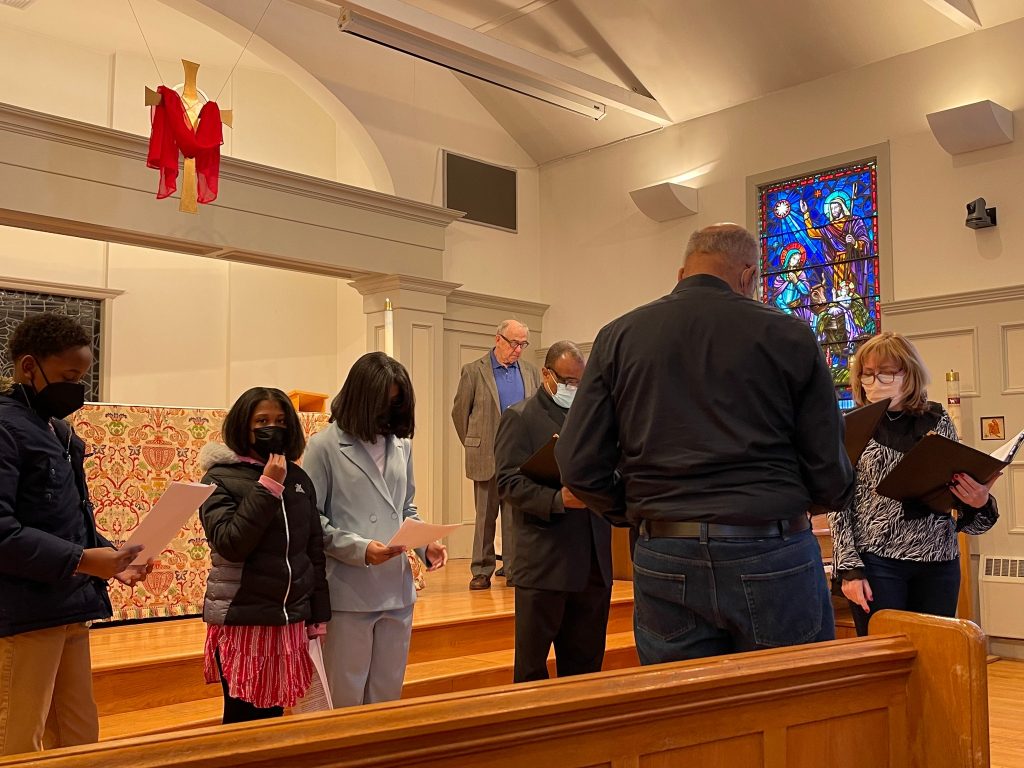
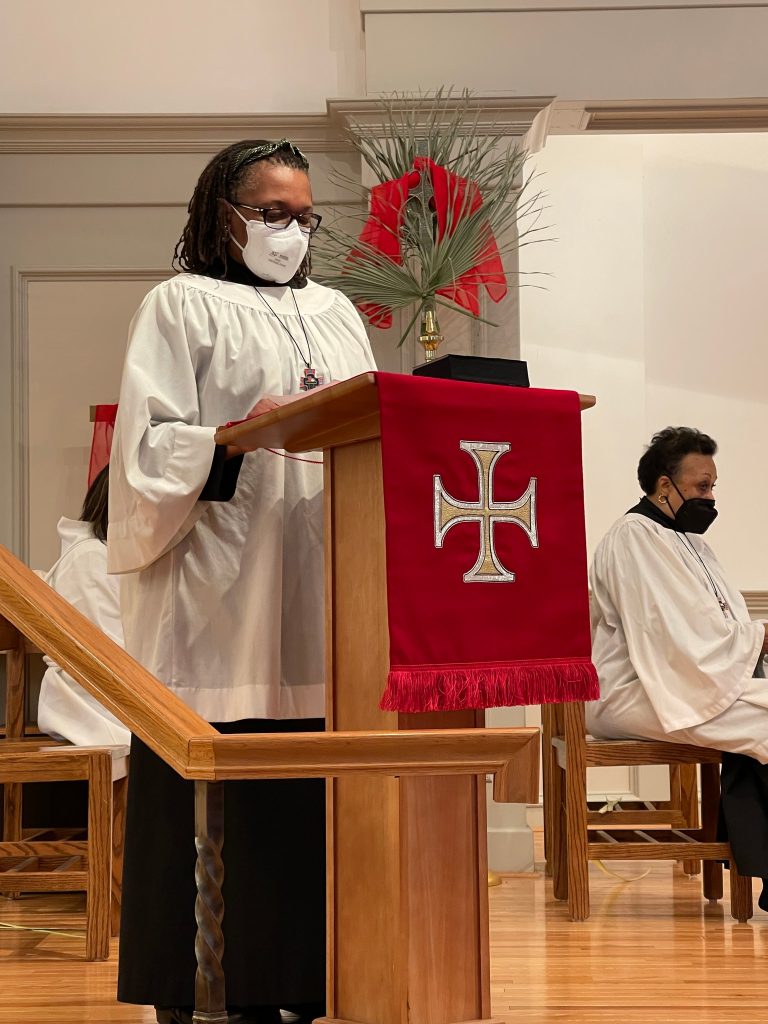
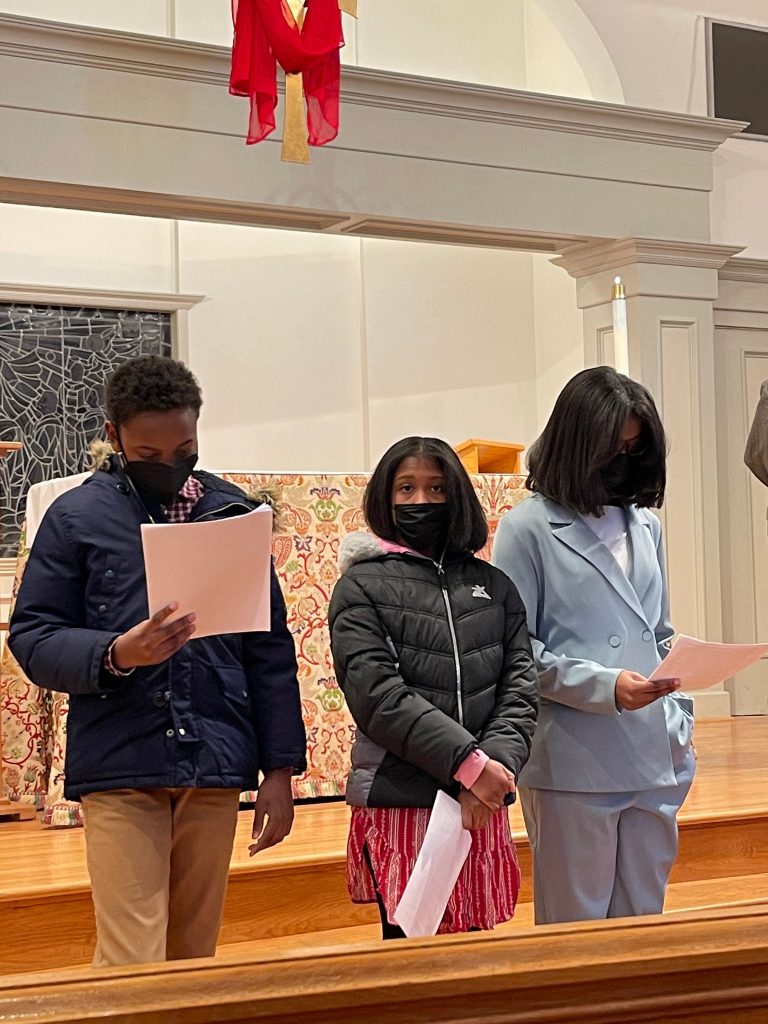
Maundy Thursday
Maundy (Holy) Thursday is highlighted by the re-enactment of the “Last Supper” where Jesus introduced the phrasing “here is my body… here is my blood” which we hear each week during the Eucharist. For many years our tradition has been to share a common meal before the service, which would begin in the Parish Hall with the mutual washing of feet as modeled by Jesus with his friends. “Maundy” translates to “mandate” and refers to the passage “I give you a new commandment, that you love one another, as I have loved you” (John 13:34). We had no meal this year, but chose to incorporate mutual hand-washing as a more accessible way to physically model the behavior to which Jesus calls us.
At the conclusion of this service, our Altar Guild reverently and ceremonially strips the sanctuary of all the usual trappings of worship (fabrics, vessels, candles, etc.) while we silently watch and witness. We are not used to seeing the bare altar, or the aumbry (a locked box where consecrated bread and wine are kept) left open and empty like a house that has been robbed, and the “perpetual” candle over it extinguished. This evokes what the disciples must have felt when Jesus was violently taken away from them.
The gifts are carried in procession to the altar of repose, a temporary station where they remain until the Good Friday service the next day. No bread and wine are consecrated on Good Friday; the only day of the church year when “the Mass” is not said.
It is customary to spend some time in prayer and reflection in front of the Altar of Repose. Some churches organize an all-night vigil, recalling a time when churches were vulnerable to violent attack. In another comforting tradition, we had contemplative music by Owen Sheridan, who has provided this ministry on this occasion for many years.

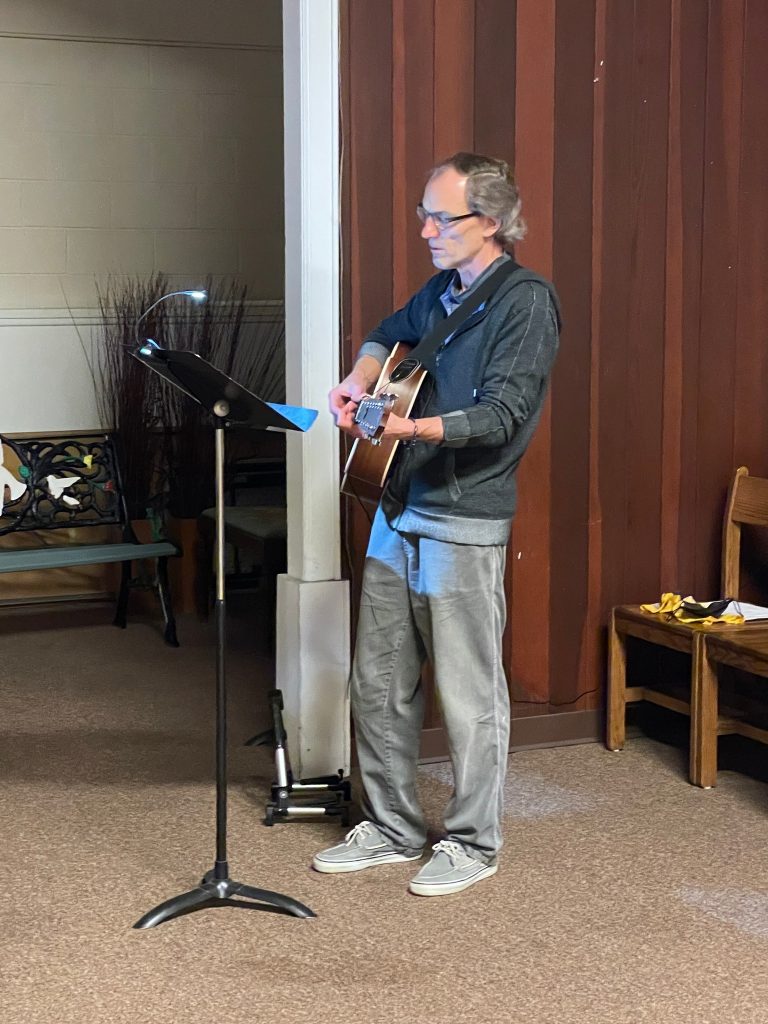
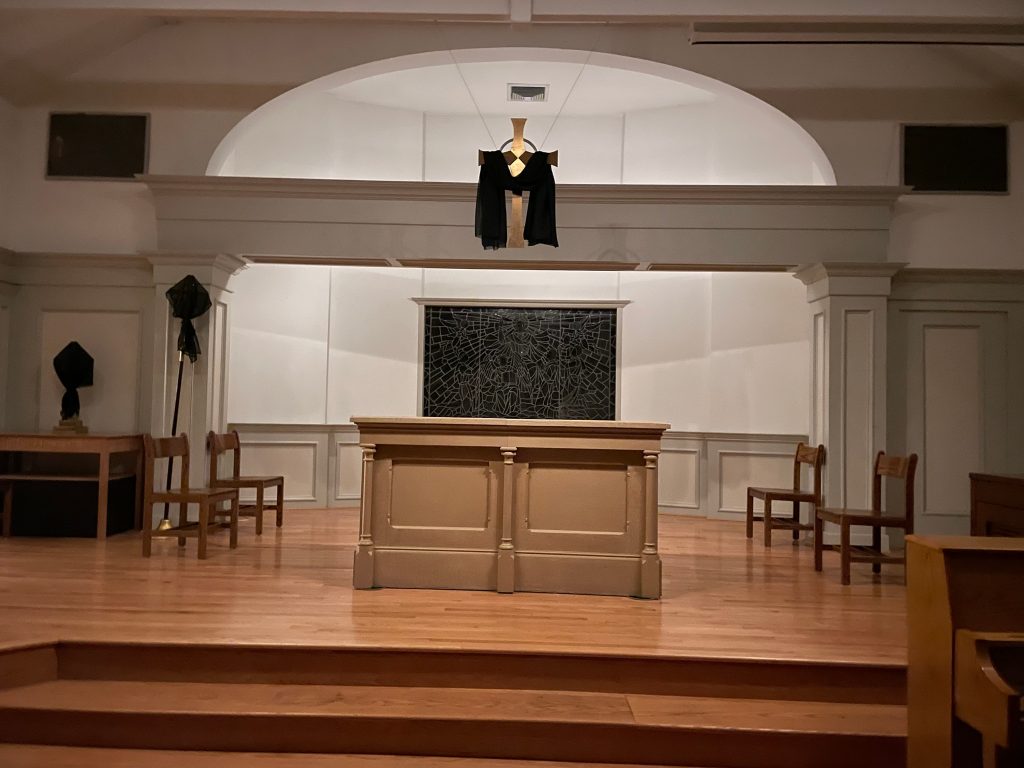
Good Friday
We had two services on Good Friday when Christ’s crucifixion and death are recalled. At noon, we offered an outdoor stations of the cross service that traveled around the church property and concluded in the Memorial Garden. The liturgy was adapted from Walking the Way of the Cross, a set of reflections Christian Paolino wrote in 2020 to witness Jesus’ final hours through the lens of the then-new pandemic. After offering them on Zoom for the past few years, this was the first time they were shared in person, updated to reflect our tentative moves towards normalcy as well as the reality of a world once again facing war.
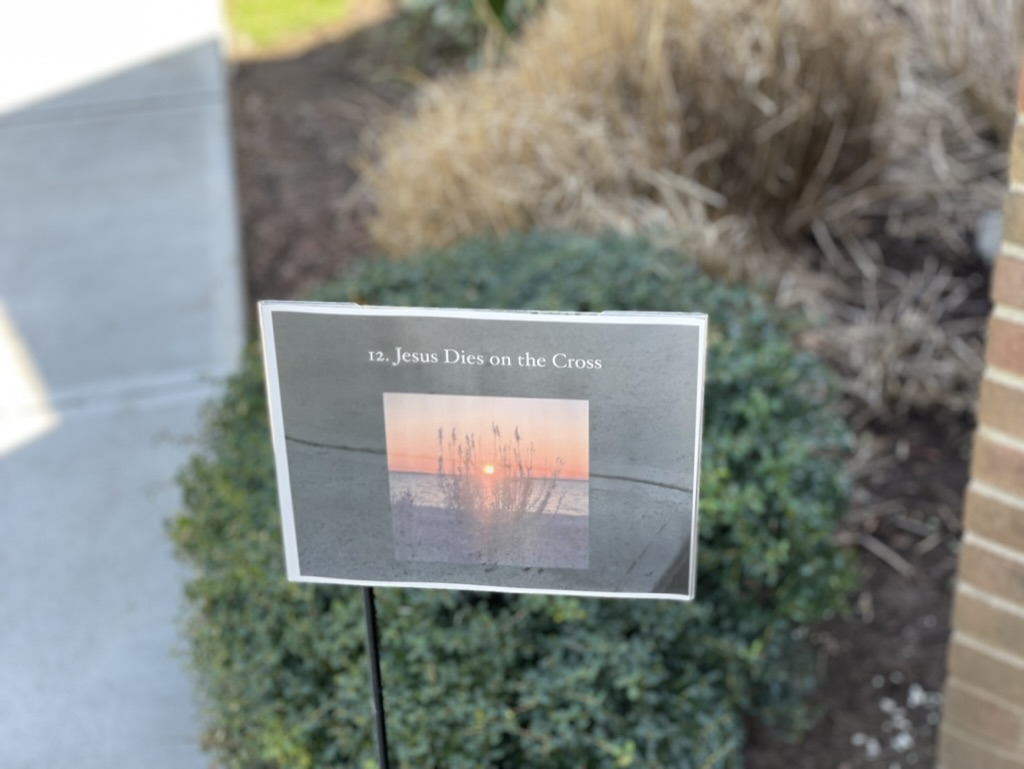
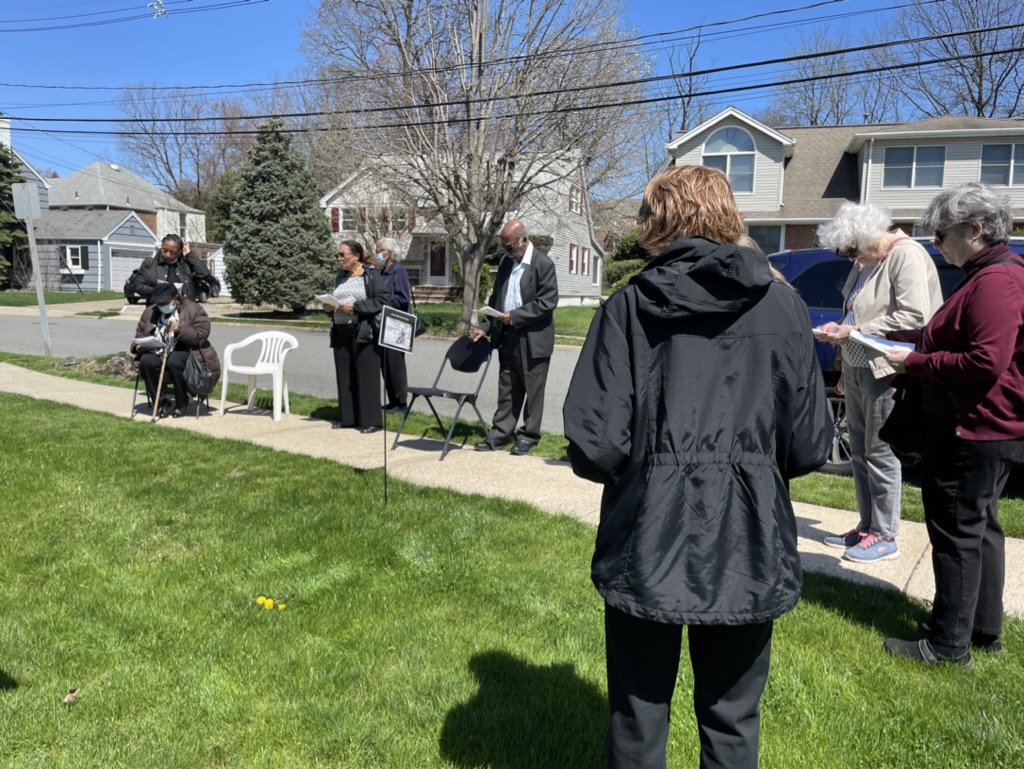
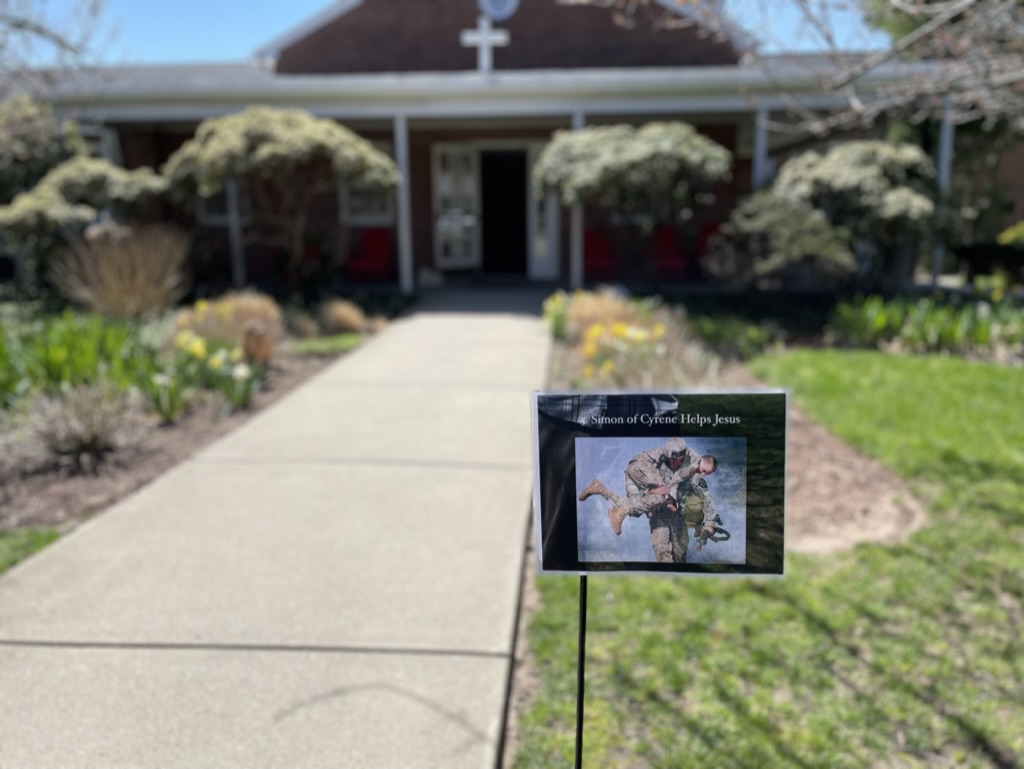
Then in the evening, we offered a solemn service including St. John’s Passion Gospel and four choral movements from Sir John Stainer’s Crucifixion, along with poetry and congregational hymns compiled by director of music George Wesner. A particularly moving moment was this poem by Ann Siddall, as read by Anne Beemsterboer:
Broken – the jar of precious perfume,
broken – the promises of loyalty,
broken – the adulation of the crowds,
broken – the Passover bread,
broken – the dreams of disciples,
and Jesus is left alone to face his death sentence.
Broken – in body and spirit,
broken – and crying out in anguish,
broken – the dream of the Kingdom,
broken – and far from home,
broken – and giving up his life,
and Jesus dies before soldiers and a few weeping friends.
Broken – the veil of the Temple,
broken – the power of sin and death,
broken – the power that oppresses,
broken – the sealed entrance to the tomb,
from all life’s broken places life rises up again and sings Alleluia.
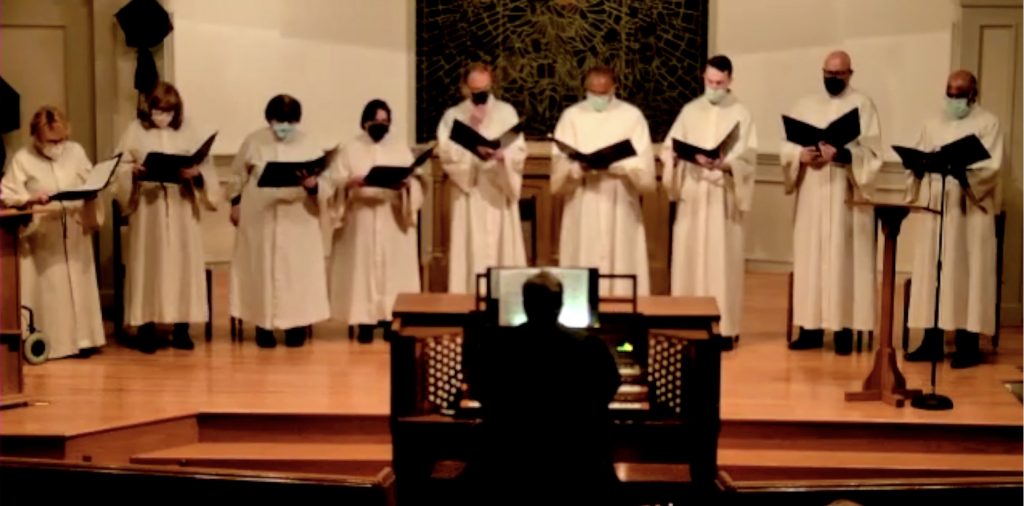
Holy Saturday/the Great Vigil of Easter
The Great Vigil of Easter is arguably the most important service of the church year. In the early days of Christianity, when believers would gather in darkness and remain together, singing and praying, until dawn. While pared down by necessity, we retain key elements of this ancient rite with the Lighting of the New Fire, singing of the exultet, and readings in the darkened church beginning with the creation story, Noah and the flood, the valley of dry bones, etc. We renewed our baptismal vows in a nod to the ancient tradition that new members were traditionally welcomed into the church at this service.
The climactic moment is what we refer to as the Great Noise, when Christ’s resurrection is joyfully declared and all are encouraged to contribute to the din as the church fills with light and the resurrection story is told.

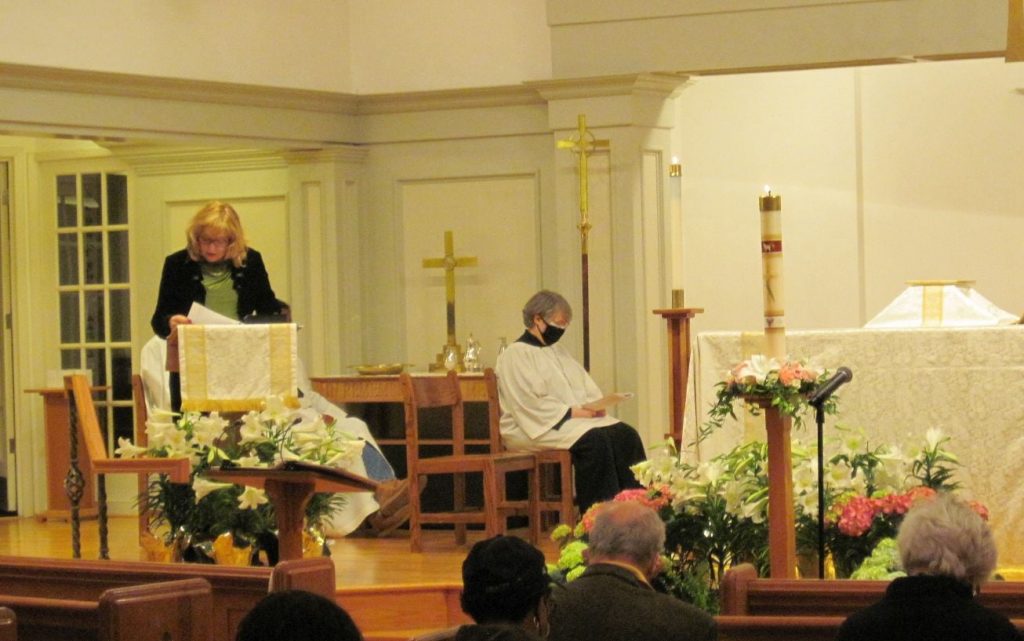
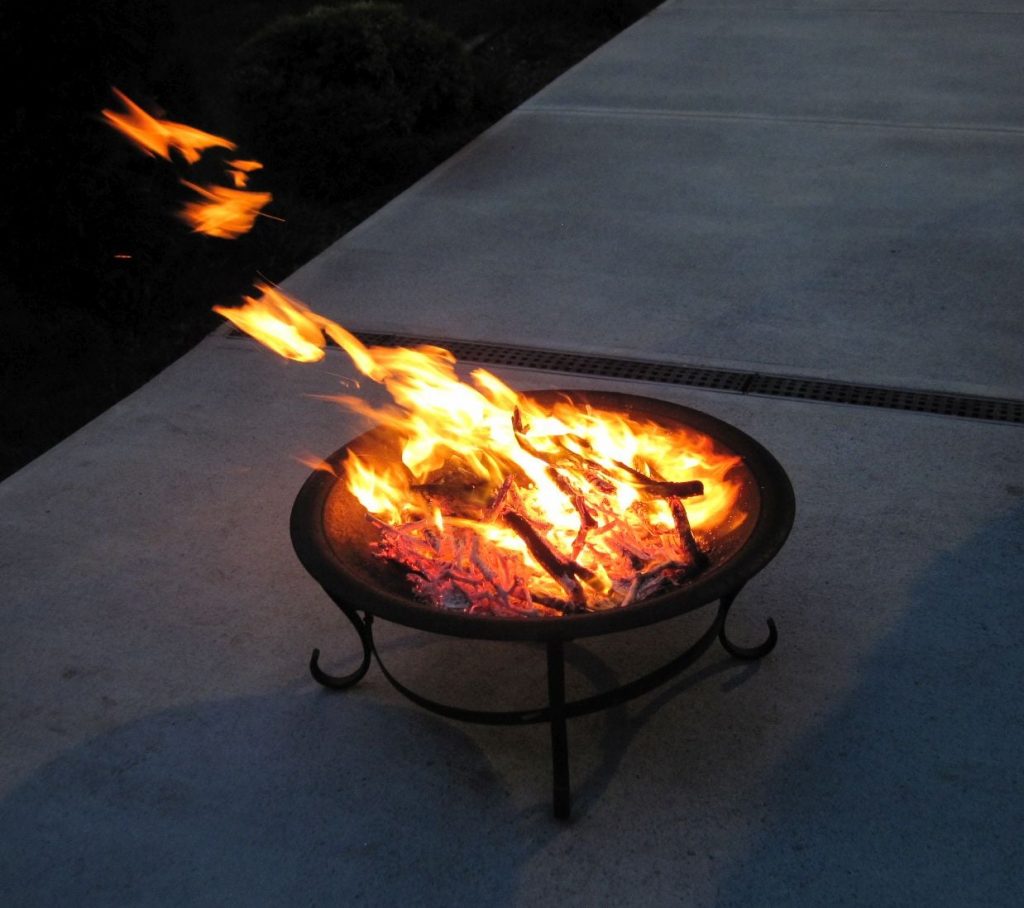
The Feast of the Resurrection (Easter Day)
Finally, Easter Day itself, with a joyous service full of music including “Jesus Christ is Risen Today” (Easter Hymn), “Let us Break Bread Together” and “This is a Day for Rising”. The offertory anthem “I’ve Just Seen Jesus” featured Mary Kearney (soprano) and Dr. Ardie Walser (tenor) and Anne Beemsterboer‘s debut at the organ. A festive reception and egg hunt followed on the lawn.

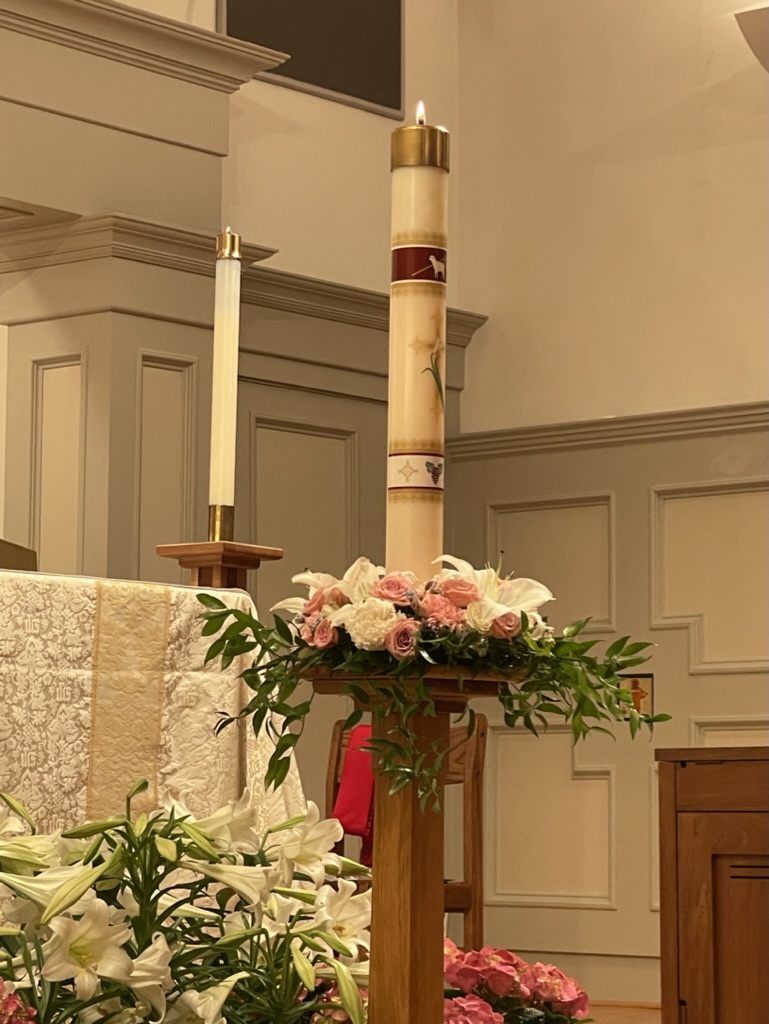
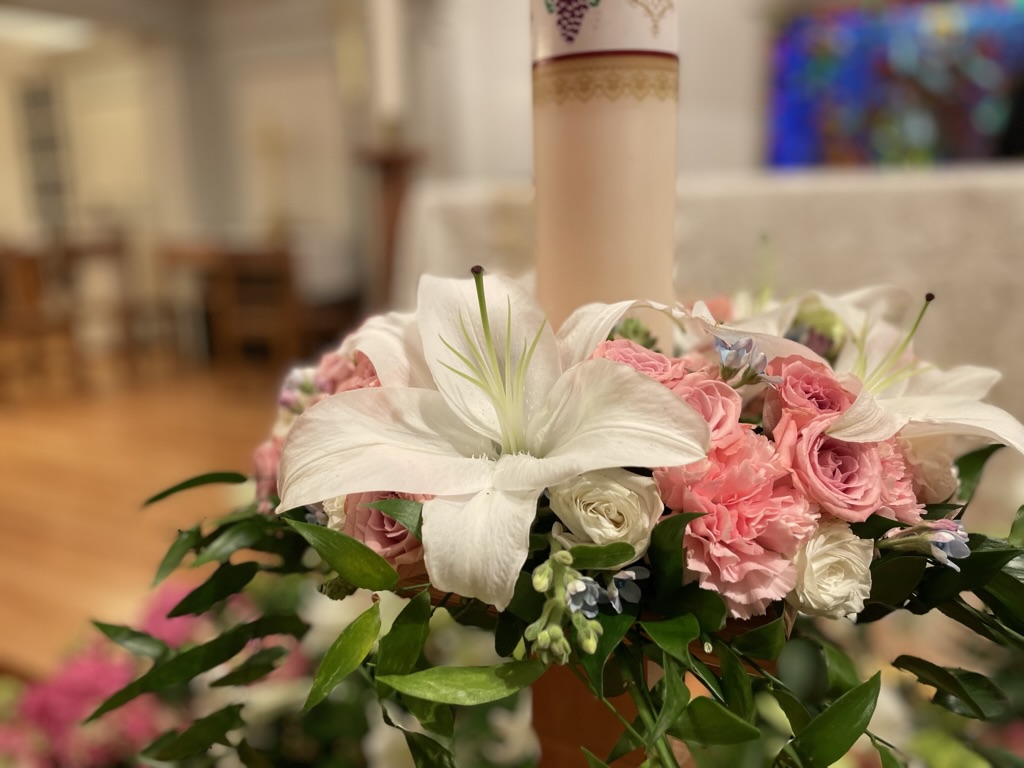
Service Video Links

